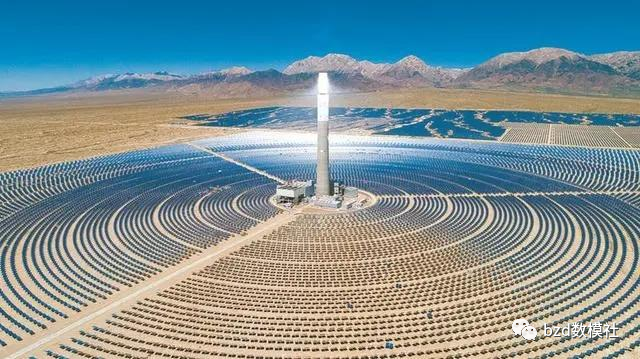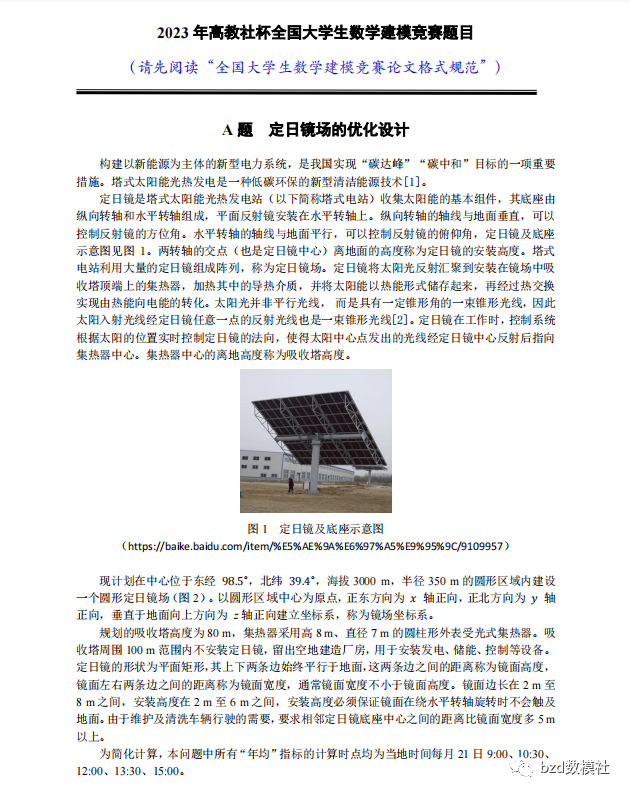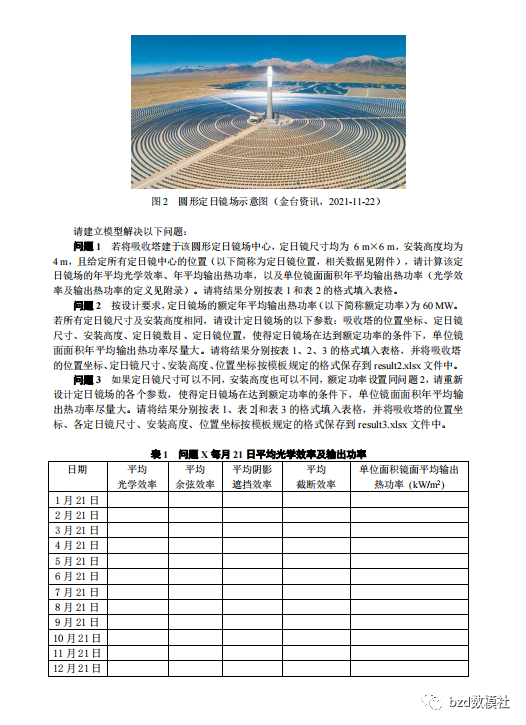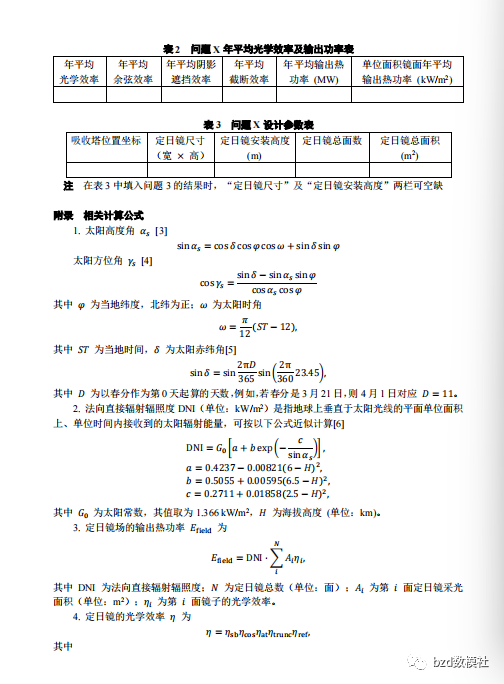Optimal design of heliostat field in question A
Building a new power system with new energy as the main body is an important measure for my country to achieve the goals of "carbon peak" and "carbon neutrality". Tower solar thermal power generation is a new low-carbon, environmentally friendly, clean energy technology [1].
The heliostat is the basic component of the tower solar thermal power station (hereinafter referred to as the tower power station) to collect solar energy. Its base is composed of a longitudinal shaft and a horizontal shaft, and the plane reflector is installed on the horizontal shaft. The axis of the longitudinal rotation axis is perpendicular to the ground and can control the azimuth angle of the reflector. The axis of the horizontal rotation axis is parallel to the ground, which can control the pitch angle of the reflector. The schematic diagram of the heliostat and base is shown in Figure 1. The height of the intersection point of the two rotating axes (also the center of the heliostat) from the ground is called the installation height of the heliostat. Tower power stations use a large number of heliostats to form an array, called a heliostat field. The heliostat reflects the sunlight and gathers it to the heat collector installed on the top of the absorption tower in the mirror field, heats the heat transfer medium in it, stores the solar energy in the form of heat energy, and then realizes the conversion from heat energy to electric energy through heat exchange. Sunlight is not a parallel ray, but a cone-shaped ray with a certain cone angle. Therefore, the light reflected by the incident light from the sun at any point of the heliostat is also a cone-shaped ray [2]. When the heliostat is working, the control system controls the normal direction of the heliostat in real time according to the position of the sun, so that the light emitted from the center of the sun is reflected by the center of the heliostat and then points to the center of the collector. The height of the collector center above the ground is called the absorption tower height.

It is now planned to be constructed in a circular area with the center located at 98.5∘ east longitude, 39.4∘ north latitude, 3000 m altitude, and 350 m radius
A circular heliostat field (Fig. 2). Taking the center of the circular area as the origin, the east direction is the positive ��� axis, the north direction is the positive ��� axis, and the upward direction perpendicular to the ground is the positive z axis to establish a coordinate system, which is called the mirror field coordinate system .
The planned absorption tower height is 80 m, and the collector adopts a cylindrical surface light-receiving collector with a height of 8 m and a diameter of 7 m. No heliostats will be installed within 100 m around the absorption tower, leaving open space to build workshops for installing power generation, energy storage, control and other equipment. The shape of the heliostat is a flat rectangle, with its upper and lower sides always parallel to the ground. The distance between these two sides is called the mirror height. The distance between the left and right sides of the mirror is called the mirror width. Usually the mirror width is not Less than the mirror height. The side length of the mirror is between 2 m and 8 m, and the installation height is between 2 m and 6 m. The installation height must ensure that the mirror does not touch when rotating around the horizontal axis.
ground. Due to the need for maintenance and cleaning of vehicles, the distance between the centers of adjacent heliostat bases is required to be 5 m longer than the mirror width.
that's all.
To simplify calculations, the calculation time points for all "annual average" indicators in this question are 9:00, 10:30, 12:00, 13:30, and 15:00 on the 21st of every month, local time.

Please build a model to solve the following problems:
Question 1 : If the absorption tower is built in the center of the circular heliostat field, the size of the heliostats is 6 m × 6 m, the installation height is 4 m, and the position of the center of all heliostats is given (hereinafter referred to as Heliostat position, please see the attachment for relevant data), please calculate the annual average optical efficiency, annual average output thermal power, and annual average output thermal power per unit mirror area of the heliostat field (see the appendix for the definitions of optical efficiency and output thermal power ). Please fill in the results in the form of Table 1 and Table 2 respectively.
Question 2 According to the design requirements, the rated annual average thermal output power of the heliostat field (hereinafter referred to as the rated power) is 60 MW. If all heliostats have the same size and installation height, please design the following parameters of the heliostat field: position coordinates of the absorption tower, heliostat
The size, installation height, number of heliostats, and heliostat positions ensure that the annual average thermal power output per unit mirror area of the heliostat field is as large as possible under the condition that the rated power is reached. Please fill in the results into the tables according to the formats of Tables 1, 2, and 3 respectively, and save the position coordinates, heliostat size, installation height, and position coordinates of the absorption tower to the result2.xlsx file in the format specified by the template.
Question 3 : If the size of the heliostat can be different, the installation height can also be different, and the rated power setting is the same as question 2. Please try again.
Design various parameters of the heliostat field so that the average annual thermal power output per unit mirror area of the heliostat field can be as large as possible under the condition that the heliostat field reaches the rated power. Please fill in the results into the tables according to the formats of Table 1, Table 2 and Table 3 respectively, and save the position coordinates of the absorption tower, the size of each heliostat, the installation height and the position coordinates to the result3.xlsx file in the format specified by the template. .


